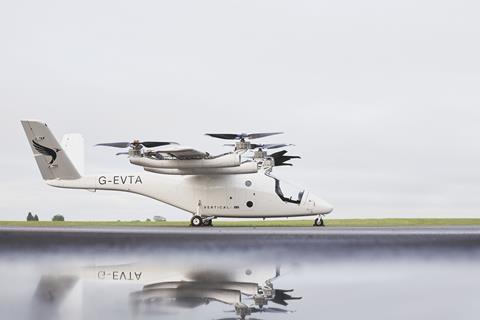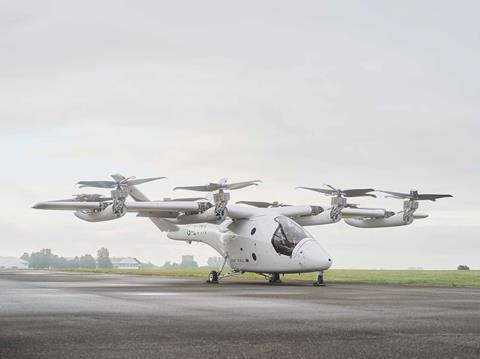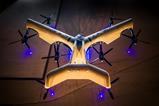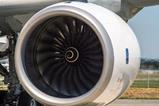UK-based Vertical Aerospace has rolled out its latest VX4 prototype, as the developer targets a critical resumption of flight testing in the coming months.
Vertical’s flight-test programme has been on hold since its initial VX4 test aircraft was written off in an August 2023 mishap caused by the failure of a propeller blade at its Cotswold airport base.

With the firm still targeting certification and service entry in 2026 for the electric vertical take-off and landing (eVTOL) aircraft, it has been building a next-generation prototype that incorporates improvements over the previous iteration.
Vertical says the new aircraft (G-EVTA) features an increased proportion of technology and components sourced from its core supply chain – now at 60%, rather than 10% on its previous prototype – plus, for the first time, in-house developed batteries, powertrain, and new propellers.
Enhancements have also seen the prototype’s power-to-weight ratio increase by 20%, which should enable the aircraft to reach the VX4’s intended cruise speed of 130kt (240km/h).
That is aided by the addition of new “more powerful” electric propulsion units (EPUs) from an undisclosed supplier.
But electric motors remain an area of uncertainty for the programme as Vertical works to select a long-term partner for their supply.
Although not fitted to the latest example, a report into the August 2023 crash revealed that the EPUs on the first-generation prototype were HTM-1900 units from motor manufacturer Equipmake. While it does not list those particular motors on its website, its higher-torque HTM-3500 model has 400kW output.

In addition, Vertical earlier this year disclosed it had parted ways with Rolls-Royce Electrical, which was slated to provide the electric motors for VX4 production aircraft.
Vertical describes the test asset as its “most advanced prototype yet”, which, while not yet production-conforming, is a “step closer to the aircraft that the company will take through to certification.” A second identical prototype is also in development and is due to fly later this year.
The new VX4 prototype has successfully completed systems and aircraft testing and commissioning. Vertical is now working with the UK Civil Aviation Authority (CAA) to gain a permit to fly.
“Vertical will then begin a robust flight-test programme at the Vertical Flight Test Centre, with a focus on achieving piloted flight,” says the company.
Vertical had hoped to fly the VX4 at next week’s Farnborough air show but abandoned those plans due to assembly of the new prototype running later than hoped.
































